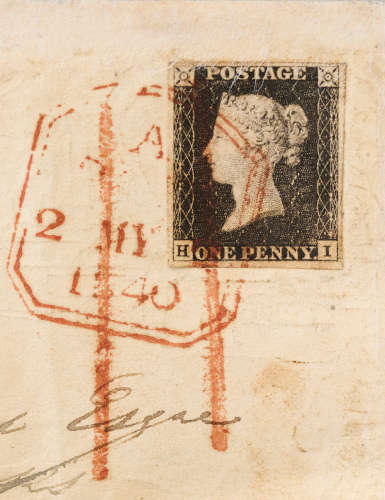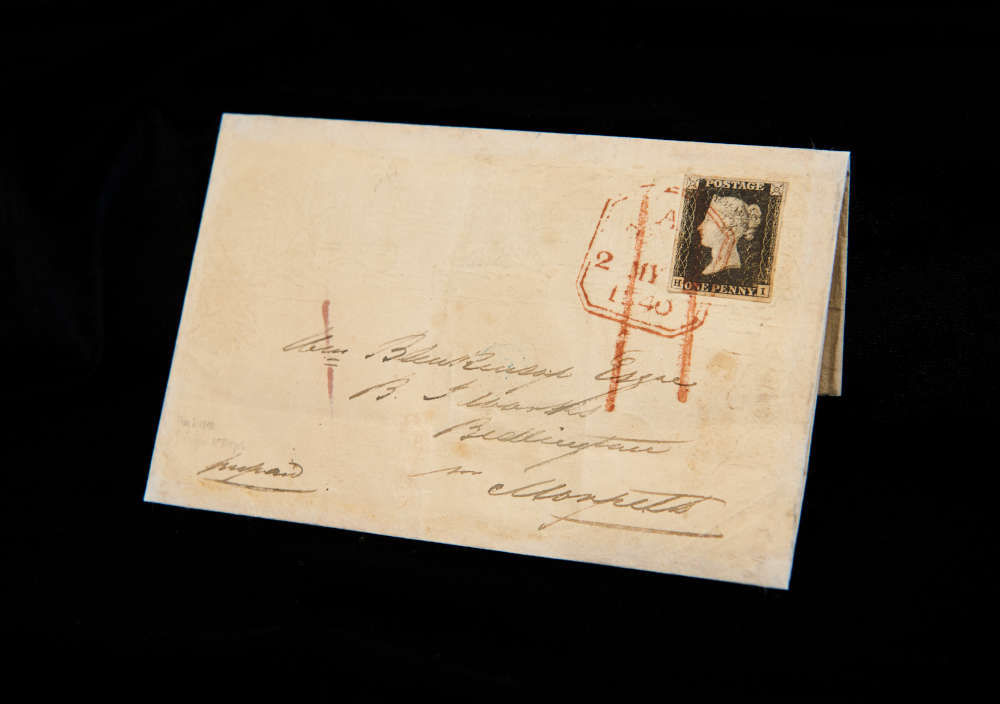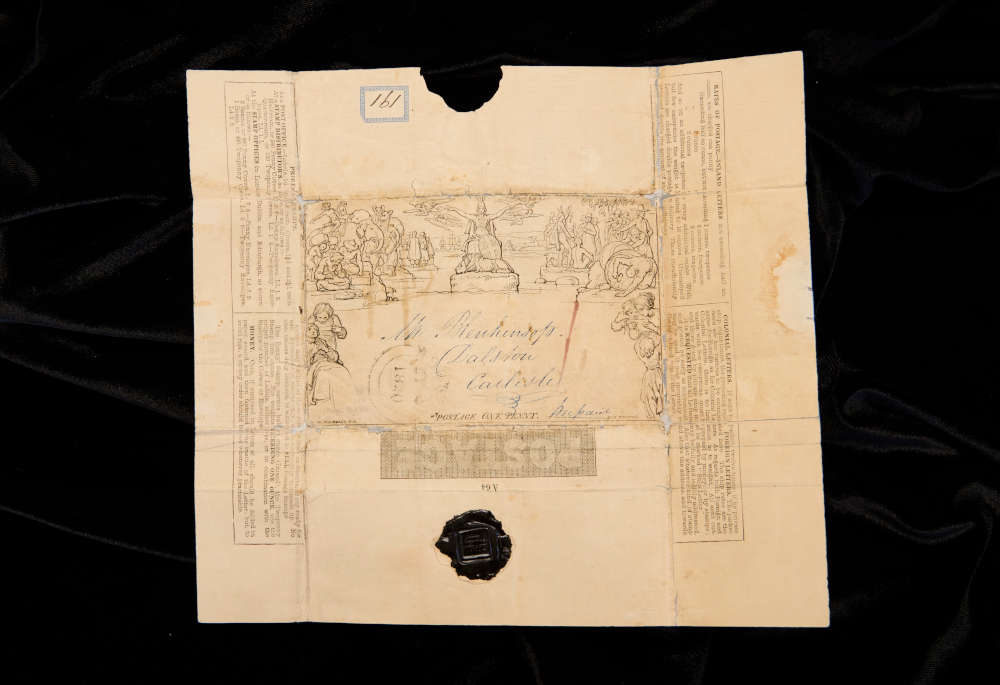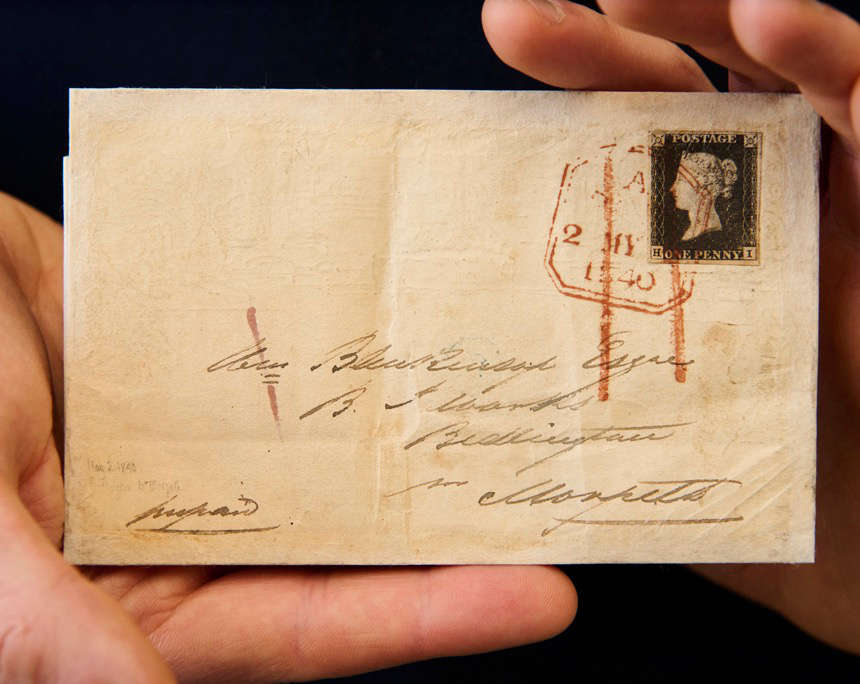The First Piece of Mail Sent Using a Stamp to Be Offered at Sotheby’s
Sotheby’s will offer a one-of-a-kind item linked to the history of modern mass communication: the earliest posted envelope using a prepaid stamp. The unique piece of philatelic history – a Mulready letter-sheet combined with a Penny Black stamp – contains the first-ever methods of prepayment for post, introduced in May 1840. Providing a glimpse into the early days of modern communication, the rare object will be offered as part of The One auction on 2nd February 2024. Carrying an estimate of $1,500,000 – $2,500,000, it is one of the most valuable philatelic items ever offered at auction.
Content
Introduced at the beginning of May, 1840, the Mulready, an ornate wrapper designed by William Mulready, and the Penny Black, the world’s first adhesive postage stamp, aimed to streamline and revolutionize postage prepayment. Both methods were an important new step in communication, eliminating the need for mail carriers to handle money, reducing the risk of theft and forgery. This pre-paid envelope, the earliest known in existence, was successfully sent, firstly stamped with a Penny Black on May 2nd, then ingeniously repurposed, turned inside out, and remailed as a Mulready on May 4th, the letter covered a combined journey of over 400 miles, all before the official start date for the stamp on 6 May.
While the 1 Penny Mulready letter-sheet has been well-preserved, the contents of the letter have since been lost to history and remain a mystery to this day. However, the postal markings on the letter-sheet paint a clear picture of its journey, indicating that it was sent from London on the evening of Saturday, May 2nd, to a 35-year-old manager of an iron works, William Blenkinsop Jr., in Dalston, Cumbria (located 75 miles to the west of London). Although the original sender remains unknown, the markings on the envelope reveal a journey spanning over 300 miles.

Sotheby’s, The One (2nd February 2024), lot 8: The 2nd May 1840 Penny Black Cover. Estimate: $1,500,000 – $2,500,000.
“We take for granted today the ease with which we can seamlessly connect with friends and loved ones instantaneously from nearly anywhere in the world. This unassuming envelope marked a significant leap forward in the history of human communication. Surviving over 180 years, the ornate Mulready envelope sealed with a Penny Black revolutionized the way people from all walks of life correspond, exchange ideas, share news and express themselves. At the dawn of the AI age, this remarkable object speaks to our innate human desire for connection and the ways in which it has evolved to new heights in the two centuries since.”
– Richard Austin, Sotheby’s Global Head of Books & Manuscripts.
“There is something special about viewing the earliest, or first, example of anything. In this case, the May 2, 1840 cover connects us to the very beginnings of philately and the modern postal system. It speaks to us from a different time, when Queen Victoria was young and the Penny Black was the microchip that revolutionized worldwide communications.”
– Allen R. Kane, Former Director of the Smithsonian National Postal Museum, 2014
Returning to Sotheby’s for its second iteration, The One is a unique, cross-category sale concept that tells an extraordinary story of excellence in craft, artistry, and endeavor from the great civilizations of antiquity to the sports and entertainment worlds of today. Through each object offered in the sale, The One showcases the very best examples of human ingenuity, achievement, and excellence. With an array of objects ranging from a beautifully preserved gilt and painted cassetta dating to 1280–1290, and The Hope Cup, a magnificent cup carved from the largest block of jasper ever seen, exhibited at the Great Exhibition of 1855, to The Dynasty Collection – the complete set of Michael Jordan’s “Air Jordan” Six Championship Sneakers (1991, 1992, 1993, 1996, 1997 and 1998.)

Sotheby’s, The One (2nd February 2024), lot 8: The 2nd May 1840 Penny Black Cover. Estimate: $1,500,000 – $2,500,000.
The Penny Black & Mulready Envelope
The Penny Black represents a device that would be central to the birth of mass communications across the globe for more than a century and a half and that still has not been completely supplanted by newer technologies. Not only is postage one of the most significant inventions in human history, the very beginning of mass and global communication, it is the lynchpin of one of the world’s most popular collecting disciplines.
Before the introduction of postage stamps, mail in the United Kingdom was paid for by the recipient, a system that was associated with an irresolvable problem: the costs of delivering mail were not recoverable by the postal service when recipients were unable or unwilling to pay for delivered items.
The adoption of prepayment, championed by Birmingham School teacher Rowland Hill, was a result of the Postage Reform Act of 1839, which abolished free franking privileges and established uniform penny postage rates. The subsequent Treasury Competition, offering a prize for the best prepayment solution, garnered over 2,600 entries, leading to the creation of new stationery and stamps.
The progenitor of tens of thousands of other stamps from numerous countries around the globe, the Penny Black is known the world over. Its design is simple: a small and now iconic portrait of the young Queen Victoria’s head in profile with the words Postage One Penny and a pair of check letters on handmade watermarked paper with gum on the back.
The first stamp became available for purchase 1 May 1840, to be valid as of 6 May 1840. Two days later, 8 May 1840, the Two Penny Blue was introduced. The Penny Black was sufficient for a letter less than half an ounce to be sent anywhere within the United Kingdom. The first stamps did not need to show the issuing country, so no country name was included on them. The United Kingdom remains the only country to omit its name on postage stamps, using the reigning monarch’s head as country identification.
Mulready stationery, also introduced in 1840 as part of the British Post Office reforms, featured letter sheets and envelopes for sale from May 1 and valid for use from May 6. Named after artist William Mulready, the design showcased Britannia, a shield, a reclining lion, and representations of Asia and North America. Engraved by John Thompson, the illustration served as a pre-paid postage indication. The letter sheets followed traditional design, while the envelopes, folded into a diamond shape, were sealed at overlapping edges. Both were issued in sheets of twelve (Formes) with one-penny and two-penny values matching postage stamp colors.
It is perhaps ironic that the Mulready design was conceived on Friday the 13th and the first completed proof was delivered on April Fools’ Day. Offered for sale to the public on May 1st the ill-fated Mulready was ridiculed and almost immediately caricatures appeared lampooning the design. Yet, the success of these reforms was evident in the significant surge of mail volume handled by the Post Office, soaring from 75 million to 350 million annually within a decade.

Sotheby’s, The One (2nd February 2024), lot 8: The 2nd May 1840 Penny Black Cover. Estimate: $1,500,000 – $2,500,000.
The History of the Postal Service
Prior to the establishment of the mails, the only systems for delivering letters resided with messengers in the employ of either the King, the Church, or the Universities. The first Master of the Posts was created by Henry VIII around 1512, responsible for overseeing the King’s messengers and the transportation of all official mail in and out of the country. Although it was expressly forbidden, these messengers began to carry private letters and, by the end of the century, the growing merchant class had created their own private services. To counter this Queen Elizabeth I proclaimed all mail had to pass through official channels – in essence this meant that all letters could be opened and read.
In 1635 the first internal service was set up by Charles I to deliver mail between the major cities of England, Scotland, Wales and Ireland. Later named the General Post Office by Oliver Cromwell in 1657, the government still retained the right to open any letters in defense of “plots against the government.”
During the seventeenth and eighteenth centuries the mail was carried by relay up and down the country by teams of carriers on foot and horse from one point, or post, to another. At first, letters were only transported between post offices. Upon arrival they were collected and paid for by the recipient, the cost depending on the Treasury who regulated the postage rates and changed them regularly.
Until the dawn of the Victorian era the General Post Office would remain a staid yet profitable bastion of the Treasury and was such a good source of revenue that whenever the government needed money, the public was made to pay through higher postage rates.







